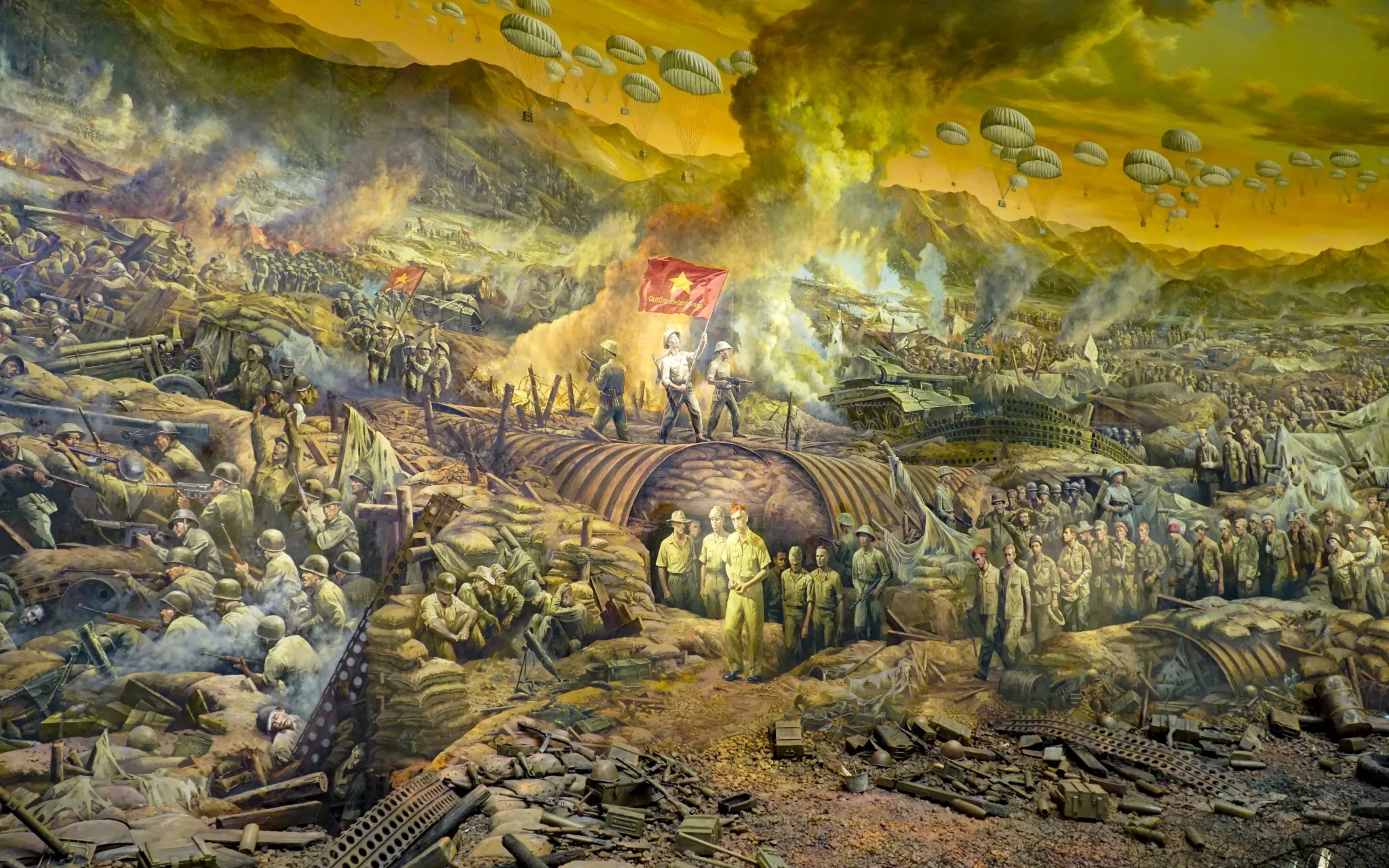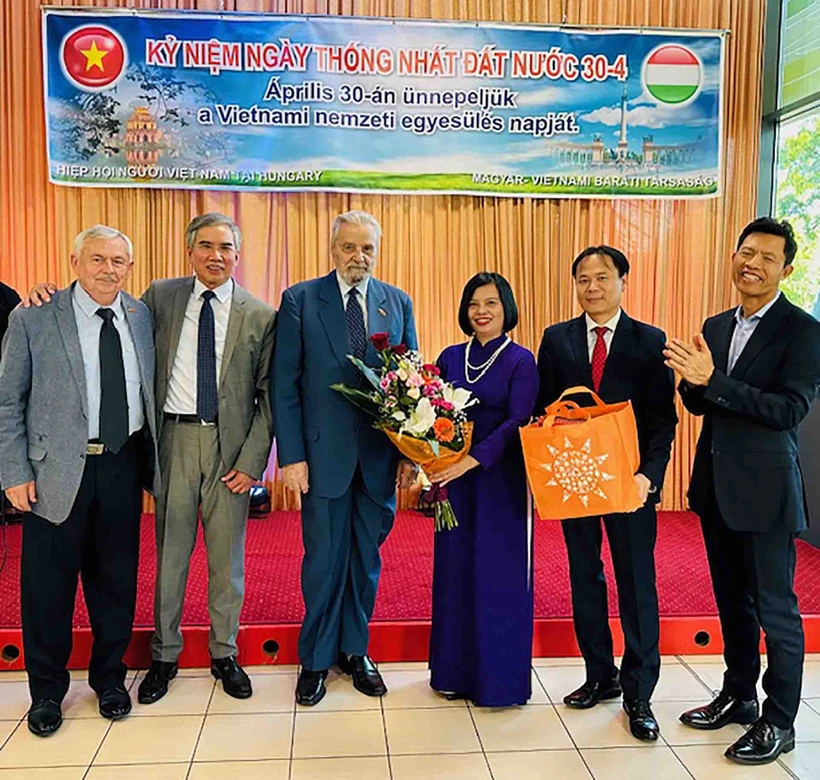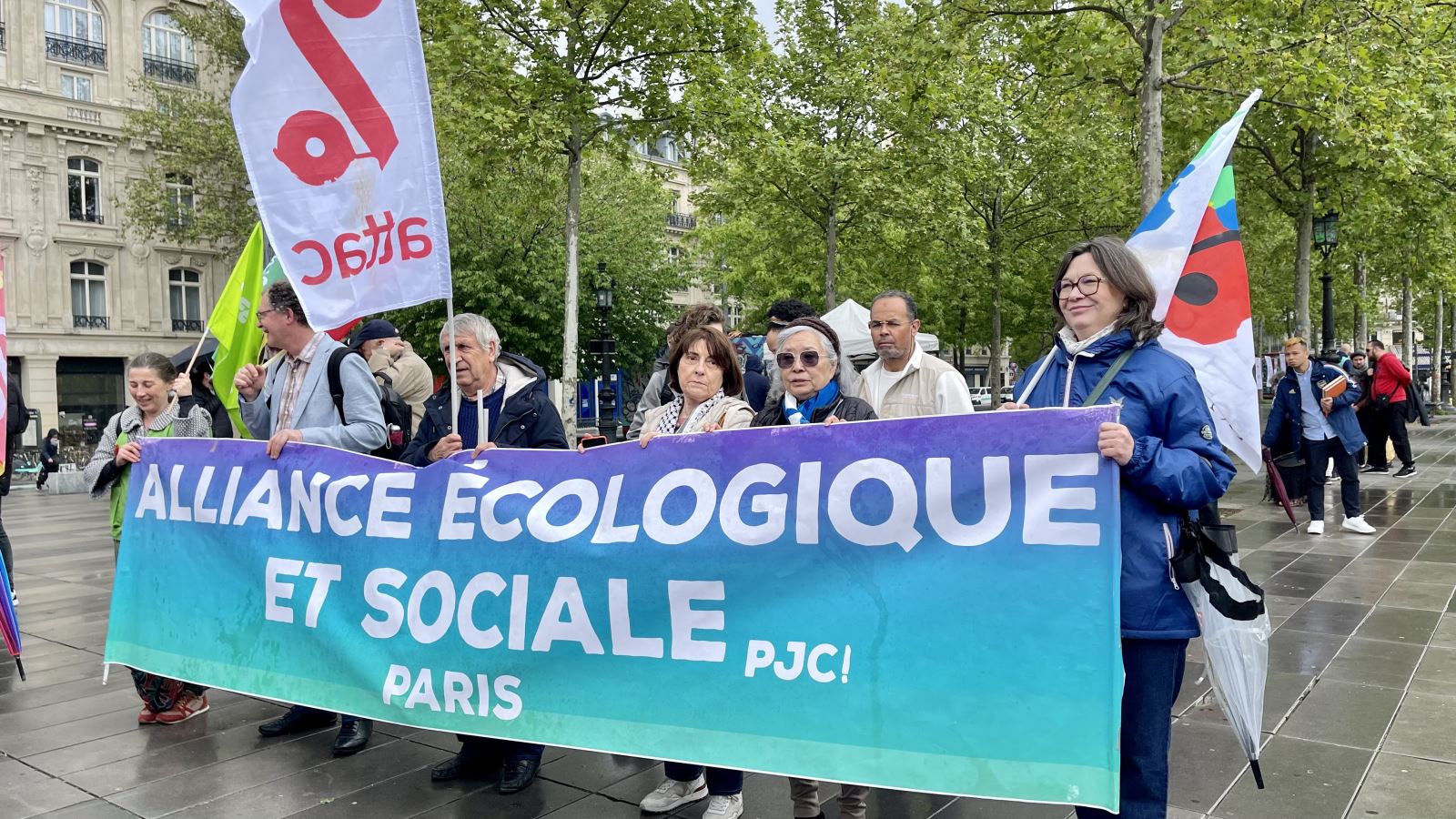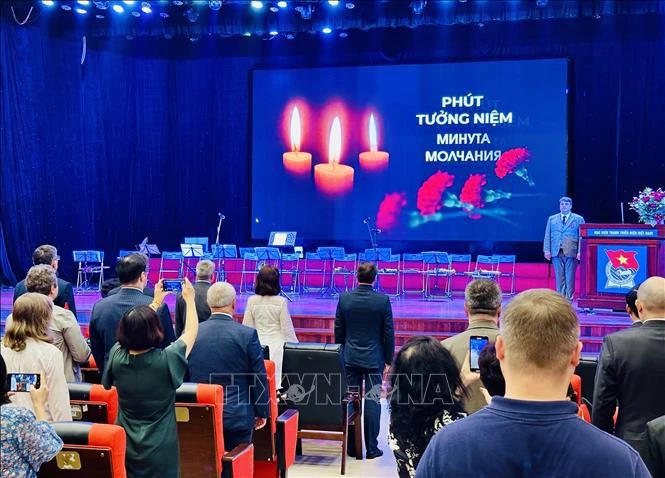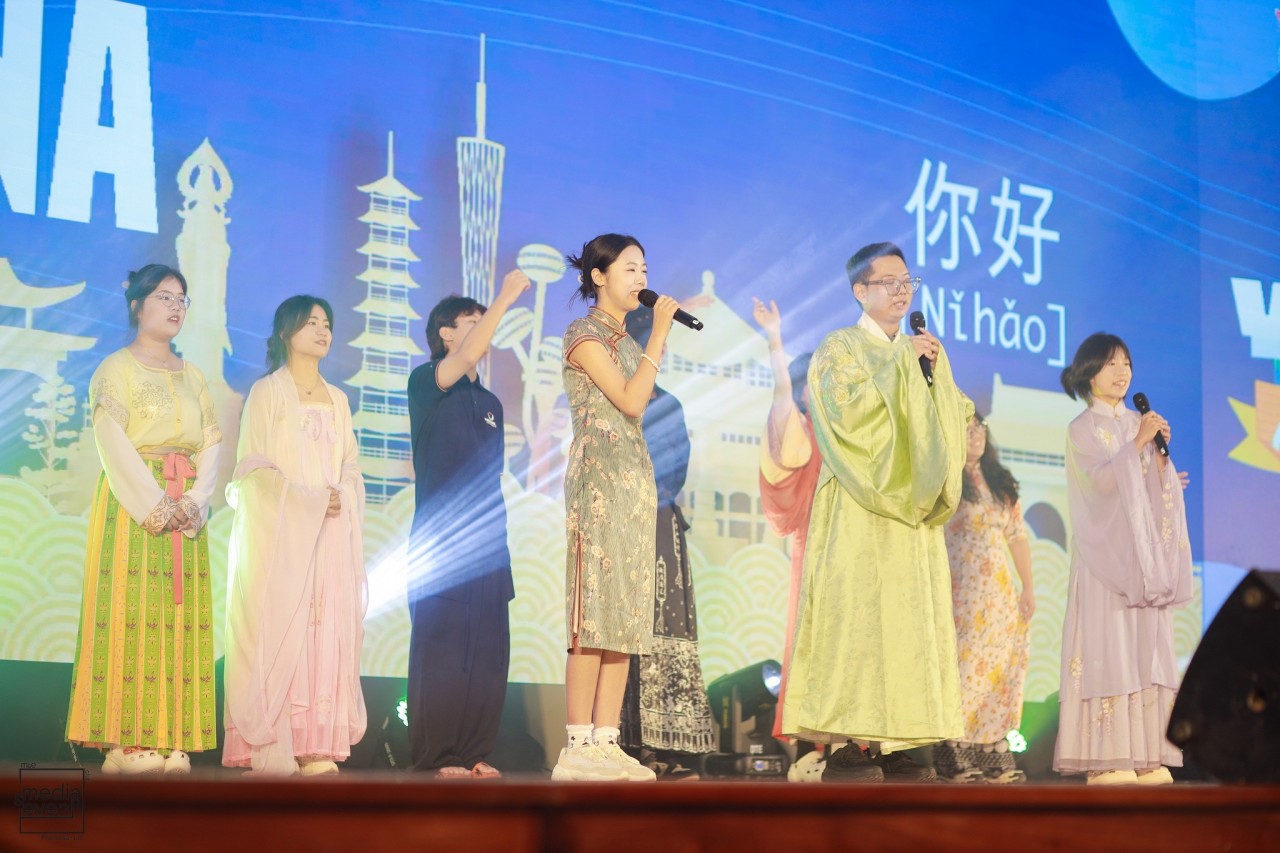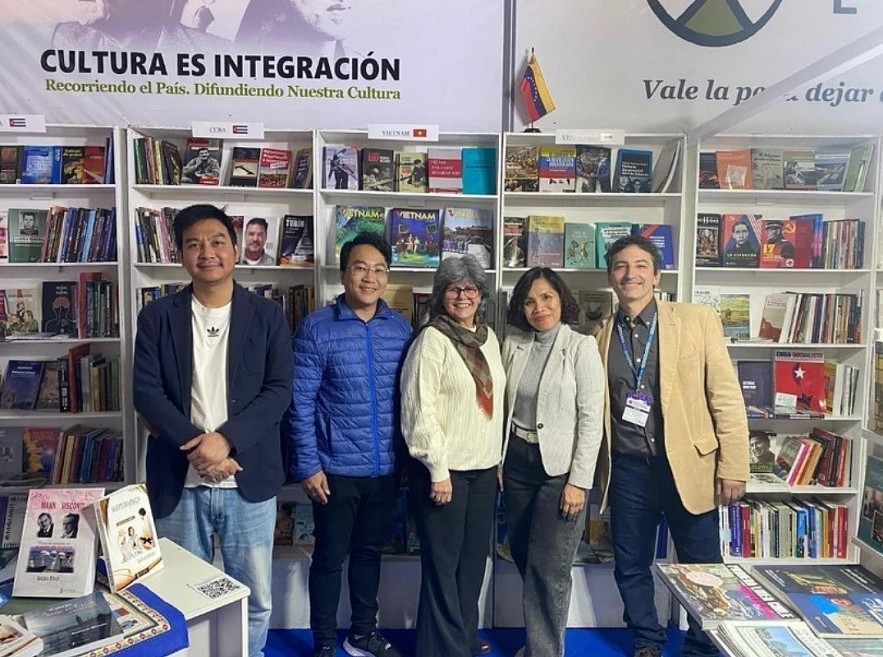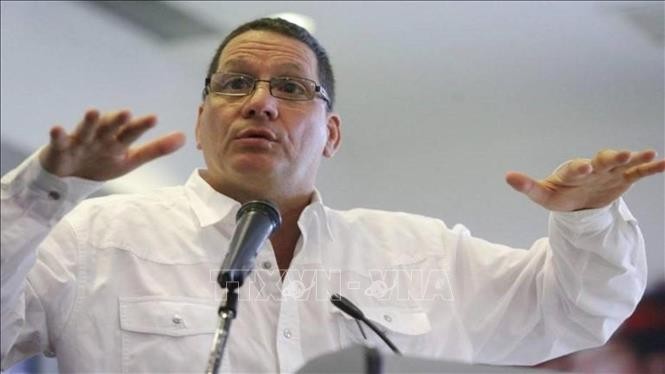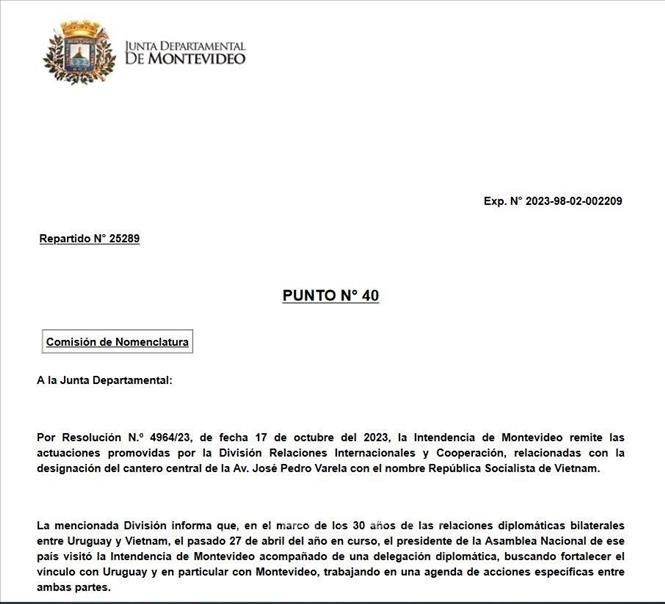Dr. Andrew Wells-Dang, leader of the Vietnam War Legacy and Reconciliation Initiative at the US Institute of Peace (USIP), emphasized that a special point in Vietnam - US relations is the diplomatic relations founded by the people, including veterans, students, business people, and non-governmental development organizations.
Looking at the post-war period, Wells-Dang said that trust and cooperation between the two peoples had been established before the two countries achieved diplomatic progress at the state level. Almost all socio-political groups support stronger bilateral relations. This is a significant achievement in the post-war reconciliation process.
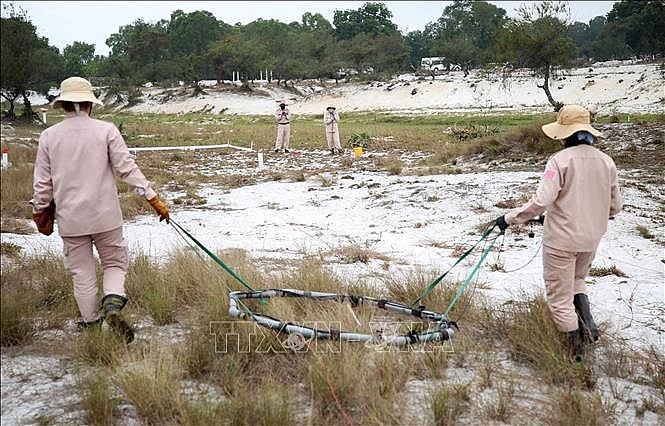 |
| Members of MAT 19 search for explosives with specialized machines in the sandy area of Hai Lang district. (Photo: VNA) |
Over the years, American non-governmental organizations, foundations, and individuals who are partners of the Viet Nam Union of Friendship Organizations have provided support with an estimated value of millions of dollars to take care of war victims in Vietnam, building charity houses, cultural facilities, libraries, giving gifts and cattle to people in remote and poor areas and ethnic minorities. Many American student groups have come to volunteer and donate money and learning facilities to people with disabilities and victims of Agent Orange/dioxin in Vietnam.
Many veterans, children, and relatives of American soldiers who died in Vietnam have gone from understanding the truth of the past to taking concrete actions to help Vietnam overcome the consequences of war. Some projects have brought about good effects on extensive reconciliation, such as organizing meetings between people on both sides of the war front, and between relatives of those who died or were injured in the war; projects of Americans whose relatives died in the Vietnam War to support building houses for the poor in Vietnam.
Many Americans witnessed firsthand the severe consequences of war that after nearly half a century the Vietnamese people are still suffering, and decided to do something to contribute to overcoming the consequences of war and developing Vietnam and the Vietnam-USA relations. Scholars, researchers, and reporters came to Vietnam to write books, articles, make films, and take photos that reflected the American war in Vietnam and its consequences and Vietnam's achievements and difficulties in building the country.
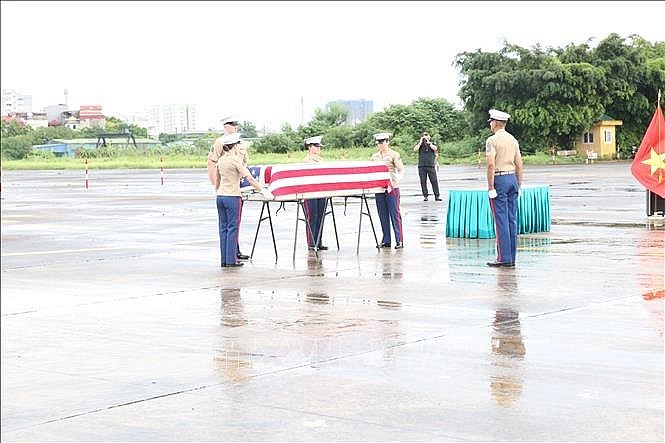 |
| The Vietnam Office for Seeking Missing Persons (VNOSMP) handed over a set of remains of US soldiers missing during the war in Vietnam to the US side. (Photo: VNA broadcast) |
Thankful for the altruism and generosity of the Vietnamese people in helping find the remains of missing American soldiers while many Vietnamese mothers, wives, and families have yet to find traces of their loved ones, an increasing number of American veterans and their families are coming to Vietnam, bringing with them hundreds of records, documents, and battlefield memorabilia to give to the Vietnamese authorities, martyrs' families, or museums, helping search for the remains of soldiers who died and went missing on battlefields.
International security researcher David Johnson of Stanford Law University, assessed: "The relationship between Vietnam and the USA is not only an example of healing the wounds of the past, but also a testament to the power of understanding and cooperation in diplomacy."
In recent years, teaching about the war in American schools has received more attention and emphasis, helping students better understand this important event in the two countries' history. Lessons from the war have profound implications for peace, human rights, and cultural diversity. Understanding the mistakes and consequences of the war can help avoid similar ones in the future. Including the war in the teaching curriculum also helps the young generation in the USA better understand the culture, geography, and people of Vietnam, opening the door to a deeper understanding of Vietnam's culture and traditions, contributing to strengthening relations between the two countries. More young Americans come to Vietnam, contributing to building bridges to promote understanding between the two countries.
According to Dr. Andrew Wells-Dang, the veteran generation is getting older, so the younger generation of the two countries needs to know more about the war, the brutality, and losses from both sides, thereby contributing to the reconciliation and development of relations between the two countries.
Ron Carver, Executive Director of the Waging Peace in Vietnam Education Fund, worked with a group of veterans and historians in the US to compile two books, one in English and one in Vietnamese, about the role of peace-loving veterans in ending the war. The group introduced the collection at 19 universities in the US and 8 universities in Vietnam.
Ron Carver said he was trying to organize a conference where American and Vietnamese historians could meet and discuss the end of the war and future cooperation strategies. The event is scheduled to be held next year to commemorate the 50th anniversary of the end of the war. This is another form of people-to-people cooperation, enhancing understanding and recording memories of the war.
The War Remnants Museum in Ho Chi Minh City and the United States Agency for International Development (USAID) signed a Memorandum of Understanding to cooperate in implementing the gallery on the two countries' joint efforts to overcome the consequences of war. This joint exhibition space will open in 2025. There will be a permanent exhibition space by veterans from Kentucky, displaying works by war photographers from Vietnam and Western countries.
According to Professor John Smith, Department of Political Science at Harvard University, the relationship between Vietnam and the USA has "gone through an incredible process since the post-war period. Cooperation and rebuilding the relationship has laid the foundation for a promising future."
Professor Sarah Brown, specializing in diplomacy and international relations, Columbia University, said: "The fact that Vietnam and the USA build a relationship based on mutual respect and common interests has created a bright spot in the multidimensional picture of modern international relations."
Even during the war, massive waves of protests against the war were held in the USA, conveying a strong message from peace-loving Americans. After the war, people-to-people diplomacy activities became a bridge to help heal the wounds of war, contributing to building trust and promoting Vietnam-USA relations to new heights.
Source: VNA

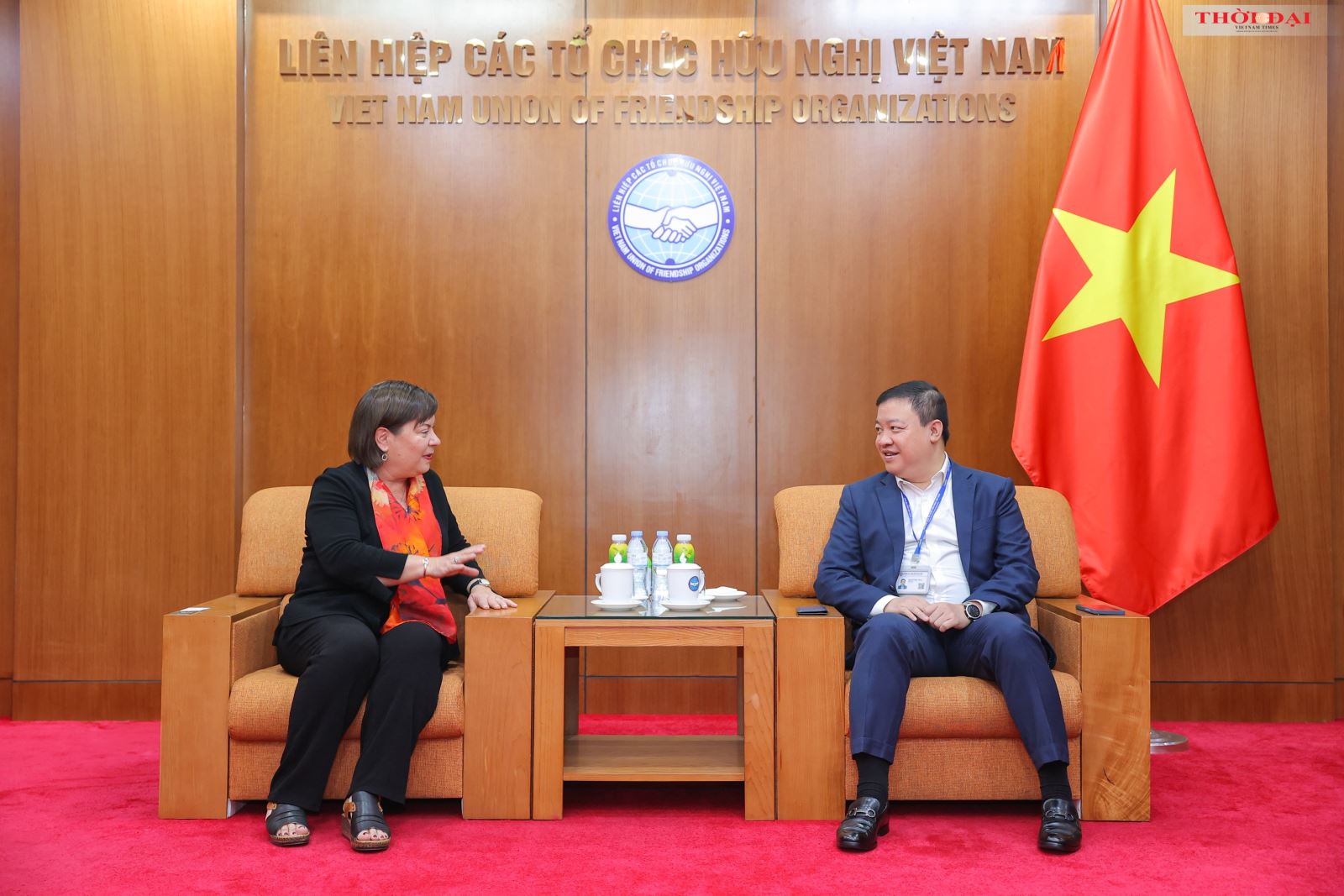
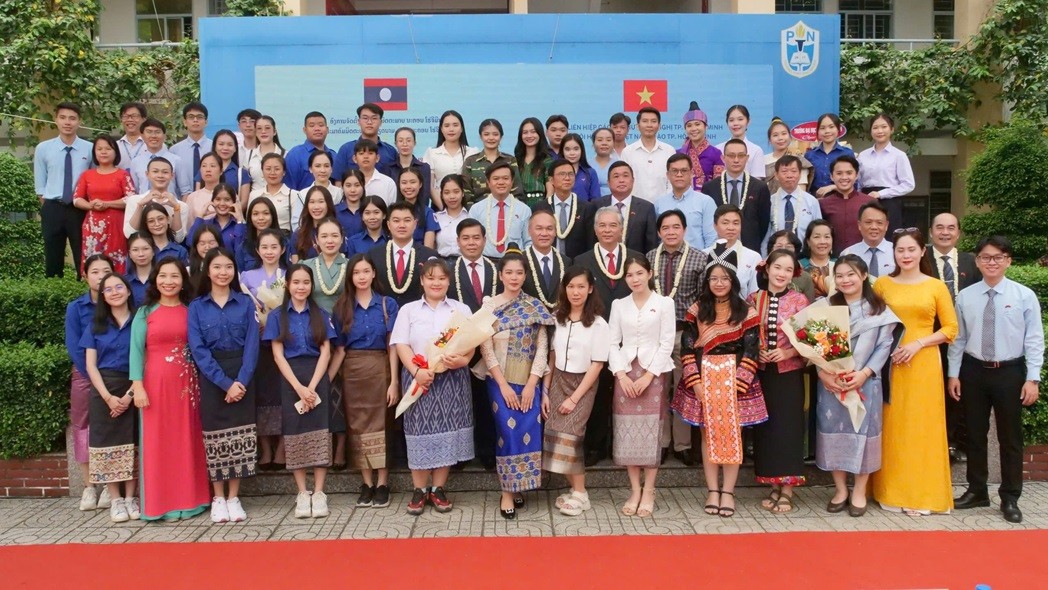
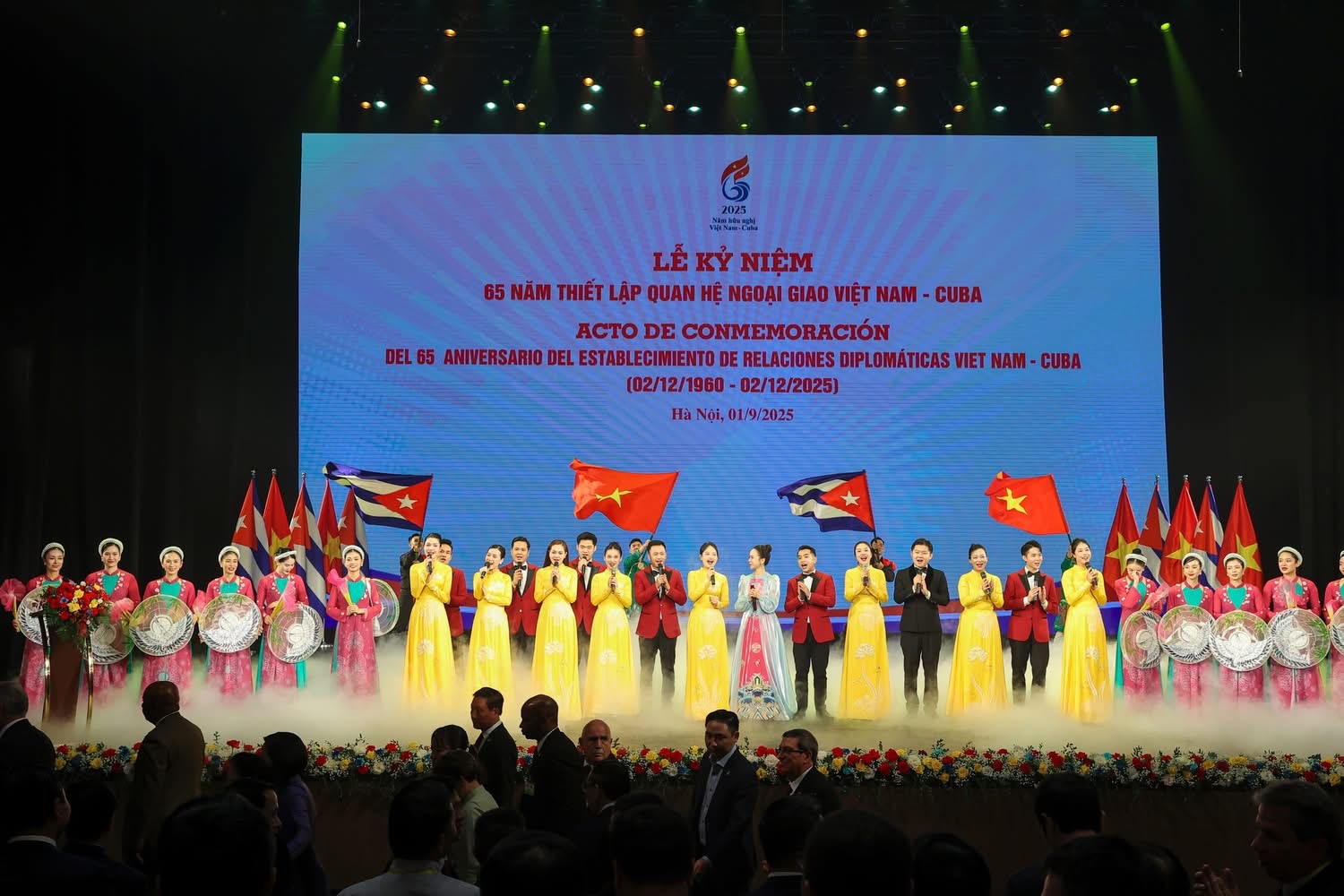
.webp)
